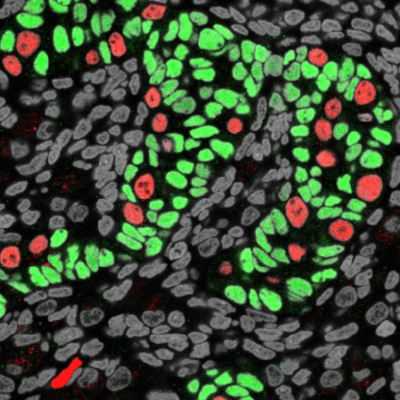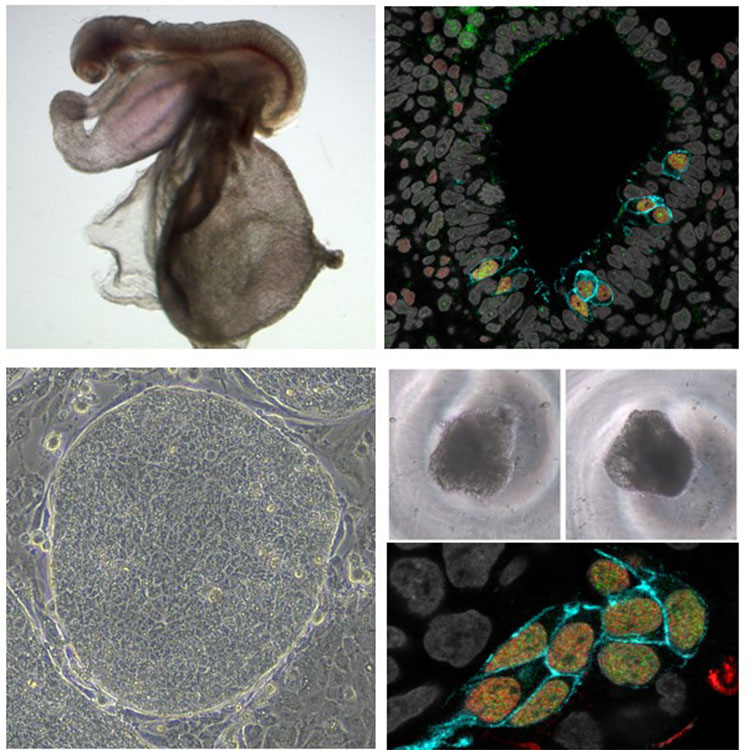

Elucidating the principles of germ cell development in humans
Germ cells refer to oocytes and sperms and their ancestral cells present in fetal and postnatal life. Germ cell lineage is the only lineage that transmit genetic information from one generation to the next. Moreover, it is the foundation for totipotency, enabling the development of all cells and tissues within an individual organism. Germline arises as primordial germ cells (PGCs) and forms either spermatozoa or oocytes through complex and extended developmental pathways. Accordingly, in humans, errors that occur during any of the steps of germ cell development can lead to a variety of critical conditions, including infertility or birth defects.
Therefore, a precise understanding of the mechanism for germ cell development bears significant implications not only in biology in general, but also in a broad range of human diseases.
Although many studies have been conducted on germline development and in-vitro gametogenesis in mice, the extrapolation of such findings to humans is not straightforward due to significant differences in the developmental time frame and the divergence of signaling networks that govern germ cell development between these species.
To overcome this issue, we employ in vitro models of human gametogenesis using human induced pluripotent stem cells along with description of the developmental trajectory of germ cells using non-human primates as a model organism.

Reconstitution of prospermatogonial development in vitro
Infertility is a significant clinical problem, affecting approximately 10% of couples worldwide. Among all infertility cases, approximately 50% is attributed to male infertility, of which a certain fraction is due to the permanent loss of functional spermatozoa because of errors that occur during fetal or postnatal development or iatrogenic insults such as chemotherapy or radiotherapy for cancer.
The diagnosis and treatment of disorders due to defects in male germ cells is currently limited due to our lack of understanding of human fetal and postnatal male germ cell development.
This limitation would be overcome by the ability to derive human germ cells from induced pluripotent stem cells (hiPSCs). In this project, we carefully dissect out a perplexed and protracted developmental pathway leading to the formation of human sperms by multi-omics approach and faithfully recapitulate the process in dish using hiPSCs.


Reconstitution of prospermatogonial development in vitro
As hiPSCs-derived gamete generation is limited by ethical and safety concerns, we are developing preclinical model systems using rhesus monkeys and common marmosets. To date, we have characterized pre-migratory marmoset PGCs at E50 embryos by scRNA-seq and successfully established robust methods to induce marmoset iPSCs into PGCLCs that bear a remarkable immunophenotypic and transcriptomic similarity to pre-migratory PGCs in vivo (eLife 2023 12:e82263).
PGC specification and early post-implantation development in humans and non-human primates
PGCs, a founding population for oocytes and spermatozoa are known to be first specified from pluripotent epiblast in mice. However, how this process occurs in humans remain unknown. Using Cynomolgus monkey embryos as a surrogate to study early post-implantation development in humans, we determined that the origin of the primate germ cells is the nascent amnion and revealed the divergence of the germ cell specification pathway between primates and mice (Dev Cell 2016 39:169). Using single cell transcriptome analysis, we explore cellular and molecular mechanisms of PGC specification in primates.
